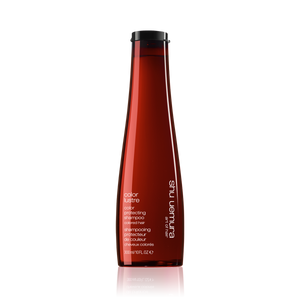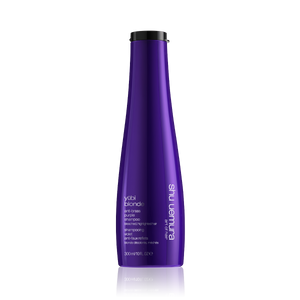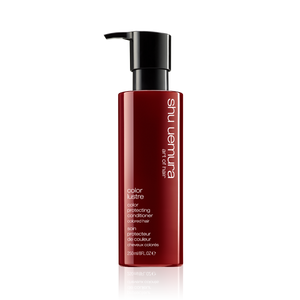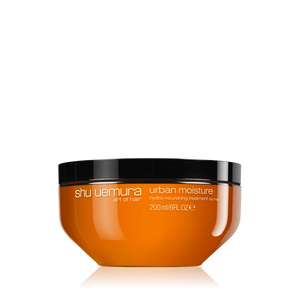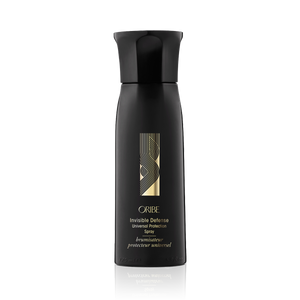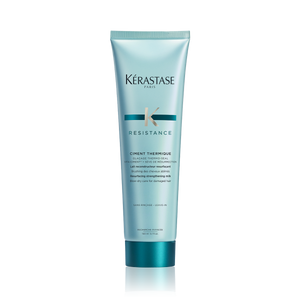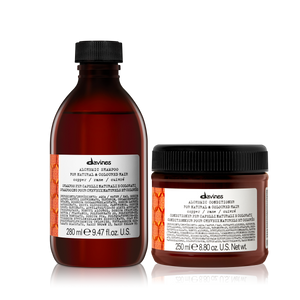7 key ways to stop your hair colour fading
Vibrant hair never goes out of style.
Whether your locks are honey blonde, chocolate brown, cherry red (one of our favourite celebrity-inspired trends at the moment), or anywhere in between, maintaining your salon-fresh shade is always a top priority.
So why does hair colour fade?
"There can be a number of environmental factors," says Charlotte Lewis, creative director at Paul Edmonds London.
"At this time of year, the sun is a massive factor, then there are things like pollution if you're living in an inner city area. If you smoke that can also affect the colour in terms of fading and dullness, and hard water can play a role."
While it may seem that different types of dye - the main ones being toner, semi-permanent and permanent - fade in different ways, the process is essentially the same.
"Peroxide is the tool that's used to open up the cuticle to allow the colour pigment to go straight in and sit inside the cortex," Charlotte explains. This method is used for balayage or all-over colour where a toner is applied after the bleach to achieve the desired shade.
"With semi-permanent colour, the pigment sits on the outer layer, which is why often it doesn't last as long."
The health of your hair also makes a difference. Your colourist can analyse your hair in detail to determine any damage and how to adapt the colour processing accordingly.
Strands that are more porous or damaged aren't able to absorb or retain pigment as well as healthy hair. With darker tones, the pigment seeps out, leaving hair looking less vibrant, while blonde hair has a tendency to turn brassy or dull as the toner fades.
The good news is there are lots of ways you can repair your hair and prevent fading. Here, Charlotte offers her expert advice on how to keep your colour looking fresh for longer…
1. Don't wash your hair too often
"One of the questions that I always ask my clients before a colour appointment is, 'How often do you wash your hair?'" Charlotte says.
"If it's somebody who's washing their hair every day, even with permanent colour it will be less vibrant after a shorter period of time, particularly if you're talking about red tones."
If you want to try the 'cowboy copper' trend, for example, it's better to cut down on how often you lather up your locks - even if that means using dry shampoo in between washes.
"I always encourage colour clients to train themselves not to wash their hair as often as they might have before," Charlotte says.
"If you can get it down to twice a week that's going to make a really big difference to the longevity of the colour."
It can also help to use a sulphate-free shampoo, as these detergent molecules can also remove colour pigment while washing away oils.
2. Tailor your products
It's not just how often you wash your hair that matters but the type of products you use.
"Shu Uemura Color Lustre is my go-to range," Charlotte says. "It's fantastic at keeping vibrancy in coloured hair and it's really versatile. It's not too heavy, so I recommend it across the board for most of my colour clients."
For blonde tones, however, you might be better with a pigmented shampoo and conditioner.
"If you're a blonde client and you're wanting to keep it nice and cool, you could use the Yubi Blonde range," Charlotte continues.
"But be careful not to overload the hair with a blue or purple shampoo because it can make it quite grey and dull. I normally recommend clients to switch between the two ranges."
She also recommends the Davines Heart of Glass, a silicone-free range aimed at blondes which seals the hair cuticle to lock in colour and boost shine.
3. Towel-dry your hair before conditioning
"This is a massive thing that I always communicate to my clients, because if your hair is dry, you are going to get less time out of the colour," Charlotte says.
Instead of slathering conditioner on your hair right after rinsing the shampoo, it helps to remove excess moisture with a towel first.
"If you don't do that then the conditioner is just slipping off your hair shaft - there's no grip, so it can't actually penetrate into the cuticle," Charlotte explains.
"It only takes five seconds, but 90% of my clients notice a difference when they do that small step."
4. Use heat protection
Just like using sunscreen on your skin, hair needs protection from heat and UV rays, something Charlotte was conscious of while working with British actress Rebecca Ferguson on the set of the Dune films, which were shot in desert locations.
"Being in 40-degree heat, it was about trying to keep her hair covered as much as possible when she wasn't so filming," Charlotte says.
In the same way the sun lightens natural hair, UV rays can cause artificial pigments to oxidise, so blonde tones may turn brassy or brown shades may look dull.
If you're holidaying somewhere hot this summer, Charlotte advises: "In the morning, wet your hair down, put a mask in it and just leave it in for the whole day, so the heat from the sun activates the mask. I like the Kérastase Soleil cream that's got SPF in it."
Remember that heat protection products aren't the same as hair sunscreens, so be sure to check for adequate UV-blocking ingredients.
To fight the fade year-round, add a spritz of heat protection spray before blow-drying, straightening or curling your hair, as this will provide a barrier on the cuticle at temperatures of 150C or more.
"That's going to help with colour fade and dryness on the hair," Charlotte says.
"One of my all-time favourites I always recommend is Kérastase Ciment Thermique - it's amazing. It's activated by the heat itself and it smoothes the hair - it's a really great all-rounder."
5. Be careful with chlorine
Drenching your hair with chlorinated water is one of the fastest ways to wash away a vivid colour, so if you really want to protect your tresses it's best to keep them out of the swimming pool altogether.
If you do want to have a dip, Charlotte says: "Wet your hair down first, because as soon as you go into that chlorinated water - or even sea water - your hair is getting loaded with chlorine or sea salt If you're able to wet your hair before you get in the water, there's less absorbency."
Some sunscreen products, such as Kérastase Soleil Creme UV Sublime Hair Cream, also help protect against chlorine by creating a barrier between your hair and the water.
6. Try a detoxifying treatment
London is a hard water area, meaning there are more metal deposits in the tap water, which can be detrimental to your hair colour.
"L'Oreal Metal Detox is a spray treatment that goes on to the hair before the colour service starts and breaks down any heavy metals within the hair that can cause colour fade," Charlotte explains.
"That's a really good treatment which I do on clients if I can see that their hair fades quite easily - it's a problem I often see in London."
Discover the full range of hair treatments at Paul Edmonds London.

7. Top up your colour
Permanent colour should only be applied every six weeks, but in between appointments you can refresh your look with temporary colour or toner.
"You might find after four weeks or so the colour looks a bit flat, so you might want to pop in and have a toner applied to put that vibrancy back in," Charlotte says.
"We have our Redken range of glazes that we use to add shine and pigment - they're always great before an event or a night out. We've also got Crazy Colour and Pulp Riot semi-permanent dyes for much brighter shades."

The future's bright
While some hair colours fade faster than others, it's not difficult to maintain radiant locks by following Charlotte's do's and don'ts.
By using the right products, avoiding elements that will cause the pigment to seep away, and giving your tresses some TLC, you can keep your colour looking lustrous for longer.
Thinking about switching up your shade for summer? Book your next colour appointment at Paul Edmonds London.

